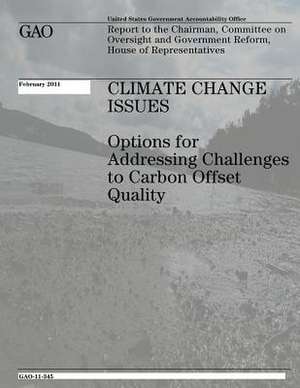Climate Change Issues
Autor U. S. Government Accountability Office Contribuţii de U. S. Governmenten Limba Engleză Paperback
Preț: 85.76 lei
Nou
Puncte Express: 129
Preț estimativ în valută:
16.41€ • 17.18$ • 13.58£
16.41€ • 17.18$ • 13.58£
Carte disponibilă
Livrare economică 15-29 martie
Preluare comenzi: 021 569.72.76
Specificații
ISBN-13: 9781478106678
ISBN-10: 1478106670
Pagini: 44
Dimensiuni: 216 x 279 x 2 mm
Greutate: 0.13 kg
Editura: CREATESPACE
ISBN-10: 1478106670
Pagini: 44
Dimensiuni: 216 x 279 x 2 mm
Greutate: 0.13 kg
Editura: CREATESPACE
